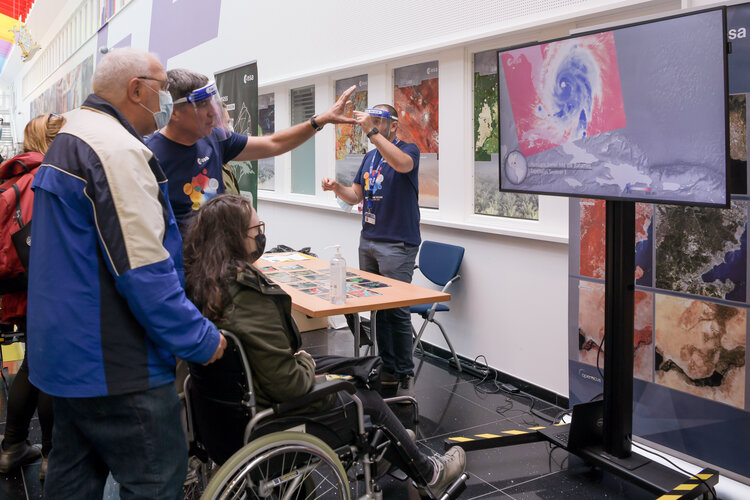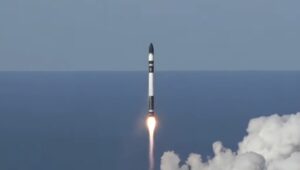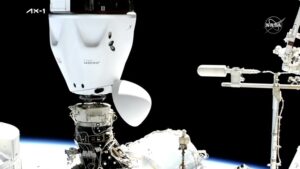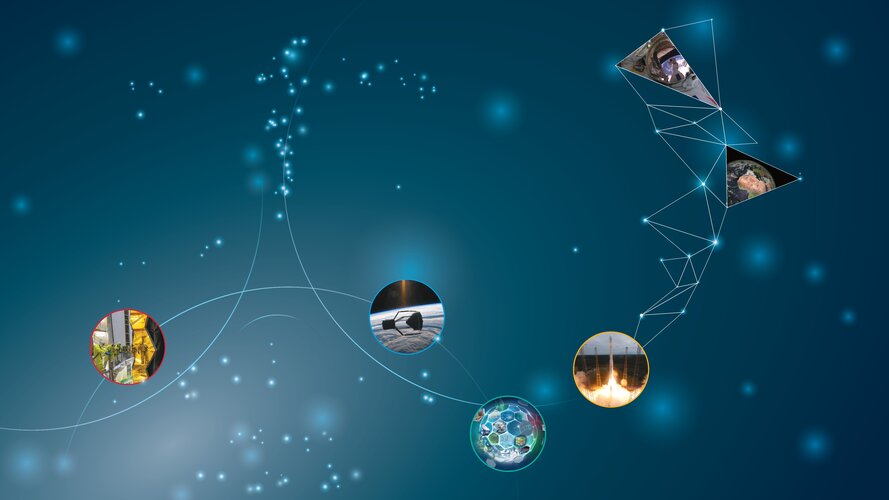Register: Open Day for visitors with disabilities
Friday, 16 September 2022 05:32
Registration has begun for the ESA Open Day at ESTEC on Saturday 1 October, open to people with disabilities. ESA’s ESTEC technical centre in Noordwijk, the Netherlands, will be open from 10:00 to 14:00, giving visitors with disabilities the opportunity to tour this leading European space establishment at their own pace. The event will conclude with a talk by ESA astronaut Matthias Maurer.
Rocket Lab launches Japanese radar imaging satellite on 30th Electron mission
Friday, 16 September 2022 05:11
Rocket Lab successfully launched a Japanese radar imaging satellite Sept. 15 as the company prepares for another attempt to recover and reuse a booster.
The post Rocket Lab launches Japanese radar imaging satellite on 30th Electron mission appeared first on SpaceNews.
U.S. weighing options to compensate commercial companies if satellites are attacked
Thursday, 15 September 2022 21:40
U.S. defense and intelligence agencies that increasingly rely on commercial satellites for imagery and other services are discussing how they might compensate companies if their spacecraft is damaged during an armed conflict.
The post U.S. weighing options to compensate commercial companies if satellites are attacked appeared first on SpaceNews.
Mars rover sees hints of past life in latest rock samples
Thursday, 15 September 2022 19:16 NASA's Perseverance Mars rover has detected its highest concentrations yet of organic molecules, in a potential signal of ancient microbes that scientists are eager to confirm when the rock samples are eventually brought to Earth.
While organic matter has been found on the Red Planet before, the new discovery is seen as especially promising because it came from an area where sediment and sal
NASA's Perseverance Mars rover has detected its highest concentrations yet of organic molecules, in a potential signal of ancient microbes that scientists are eager to confirm when the rock samples are eventually brought to Earth.
While organic matter has been found on the Red Planet before, the new discovery is seen as especially promising because it came from an area where sediment and sal NASA's Perseverance rover investigates geologically rich Mars terrain
Thursday, 15 September 2022 17:02
NASA's Perseverance rover is well into its second science campaign, collecting rock-core samples from features within an area long considered by scientists to be a top prospect for finding signs of ancient microbial life on Mars.
Satellite operators weigh strategies for an industry in transformation
Thursday, 15 September 2022 15:33
The satellite industry’s largest and most established operators are bracing for major disruption as consolidation and new entrants shake up the state of play.
The post Satellite operators weigh strategies for an industry in transformation appeared first on SpaceNews.
Lowell Discovery Telescope plays key role in DART planetary defense test mission
Thursday, 15 September 2022 14:34 Within two weeks, the DART spacecraft will impact the asteroid moon Dimorphos as it completes the world's first planetary defense test mission. The success of the effort relies heavily on the Lowell Discovery Telescope, which scientists are using for both before- and after-impact observations.
The DART (Double Asteroid Redirection Test) mission is an outgrowth of ongoing interest in planet
Within two weeks, the DART spacecraft will impact the asteroid moon Dimorphos as it completes the world's first planetary defense test mission. The success of the effort relies heavily on the Lowell Discovery Telescope, which scientists are using for both before- and after-impact observations.
The DART (Double Asteroid Redirection Test) mission is an outgrowth of ongoing interest in planet Media Briefing: Europe takes part in historic asteroid impact demonstration
Thursday, 15 September 2022 13:00 Video:
01:04:23
Video:
01:04:23
On September 27 at 01:14 CEST, NASA’s DART (for ‘Double Asteroid Redirection Test’) mission is lined up to collide with a body called Dimorphos – a 160-m diameter ‘moonlet’ of a larger asteroid called Didymos – to try and measurably shift its orbit. In this media briefing, hear more about Europe’s contribution to the DART mission, and learn of ESA’s own mission with a close-up survey of Dimorphos, conducted by a spacecraft called HERA. The HERA mission is planned for launch in 2024.
GHGSat taps Spire to expand greenhouse gas monitoring constellation
Thursday, 15 September 2022 11:52
Spire Global said Sept. 15 it will build three 16U cubesats launching in 2023 to expand Canadian greenhouse gas-monitoring operator GHGSat’s constellation.
The post GHGSat taps Spire to expand greenhouse gas monitoring constellation appeared first on SpaceNews.
World's first satellite with both SAR and Optical Payloads will revolutionize geospatial imaging
Thursday, 15 September 2022 10:47 Antaris, the software platform provider for space, and GalaxEye, an imaging satellite operator, has announced the signing of a Memorandum of Understanding to create the world's first satellite featuring both SAR and optical sensors on a single satellite. The MOU highlights a unique commitment between three Indian space leaders-GalaxEye, Ananth Technologies and XDLINX Labs-and US-based satellite
Antaris, the software platform provider for space, and GalaxEye, an imaging satellite operator, has announced the signing of a Memorandum of Understanding to create the world's first satellite featuring both SAR and optical sensors on a single satellite. The MOU highlights a unique commitment between three Indian space leaders-GalaxEye, Ananth Technologies and XDLINX Labs-and US-based satellite In-flight call between European Parliament and Samantha Cristoforetti
Thursday, 15 September 2022 10:00 Video:
00:19:25
Video:
00:19:25
On 15 September 2022, ESA astronaut Samantha Cristoforetti conducted an in-flight call with the European Parliament from the International Space Station. In conversation with President Metsola and ESA Director General Josef Aschbacher, she provided insights into the importance Europe’s presence in space, as well as the scientific and technological progress enabled by its activities. The three also touched on Samantha’s upcoming commandership, life on the Station, and the pressing issue of space debris.
Satlantis orders OHB Sweden satellites for multispectral mission
Thursday, 15 September 2022 09:54
Satlantis, a Spanish Earth-observation technology company, signed a contract Sept. 14 to buy two multispectral microsatellites from OHB Sweden.
The post Satlantis orders OHB Sweden satellites for multispectral mission appeared first on SpaceNews.
NASA requests proposals for two ISS private astronaut missions
Thursday, 15 September 2022 09:37
NASA is requesting proposals for two private astronaut missions to the International Space Station in 2023 and 2024, enforcing a requirement such missions be commanded by former NASA astronauts.
The post NASA requests proposals for two ISS private astronaut missions appeared first on SpaceNews.
Vast Space to develop artificial-gravity space station
Thursday, 15 September 2022 07:43
Vast Space, a Southern California startup founded by cryptocurrency billionaire Jed McCaleb, plans to establish an artificial-gravity space station in low-Earth orbit.
The post Vast Space to develop artificial-gravity space station appeared first on SpaceNews.
Space startups pitch to fly at IAC 2022
Thursday, 15 September 2022 07:30
ESA will introduce ten promising entrepreneurs in its start-up competition held at the 73rd International Astronautical Congress (IAC 2022) in Paris from 18–22 September.

